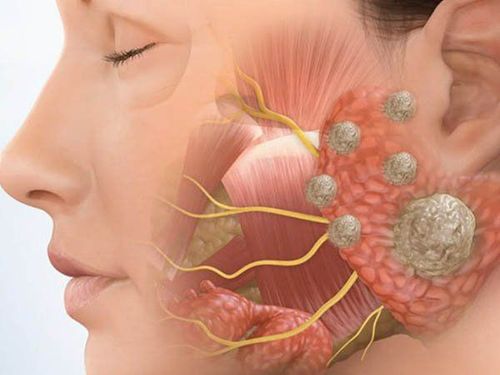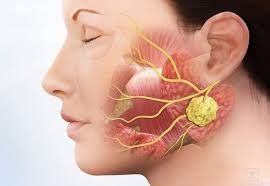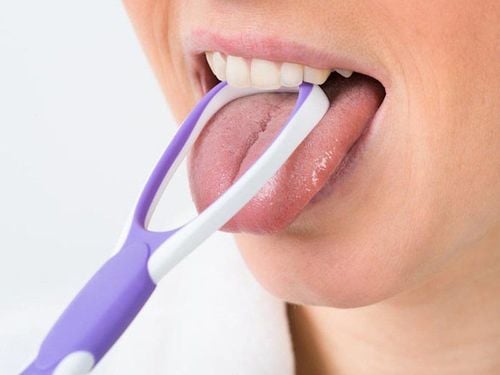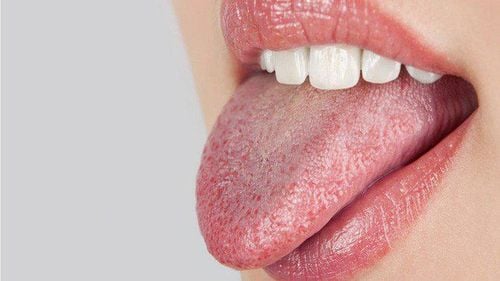This is an automatically translated article.
Salivary gland stones are masses that form at the outlet of the salivary glands. At that time, it will obstruct the outlet of saliva, causing inflammation and pain. The treatment of salivary gland stones has many different methods depending on the severity of salivary gland stones.1. Overview of salivary gland stones
Salivary gland stones are the accumulation of calcium and phosphate in the wall of the salivary glands in the form of a mass located in the gland or outlet of the salivary gland. This formation occurs when there is a clumping of secretions and mucosal cells of the salivary ducts that empty into the oral cavity, possibly due to bacteria or a chronic inflammatory process.According to anatomical characteristics, each person includes major salivary glands such as parotid glands, submandibular glands and sublingual glands. In which, accounting for up to 80% of salivary gland stones are submandibular salivary stones and Wharton duct obstruction (submandibular duct). Part of it is due to the cause originating from the parotid gland and the blockage of the Stenon tube (parotid duct). Only about 1% originate from the sublingual glands, with stones in multiple salivary glands occurring in about 25%. Adults are at a higher risk of developing stones in the salivary glands.
2. Salivary gland stone treatment method
Salivary gland stones depend on the specific condition, but the following treatment measures are appropriate:2.1 Medical treatment Some drugs are used to treat salivary gland stones such as:
Antispasmodic drugs Slippery: Makes it easier for saliva to escape. Broad-spectrum antibiotics: When there is a blockage in the salivary passages, it is easy for bacteria to multiply and cause disease. To fight infection and prevent superinfection, it is necessary to use broad-spectrum antibiotics such as beta-lactam antibiotics. Anti-inflammatory drugs and pain relievers: Anti-inflammatory drugs work to reduce swelling of the mucous membranes, helping saliva to limit blockage. Drugs that increase or decrease saliva production : This drug is used on a case-by-case basis.

Sỏi tuyến nước bọt là tình trạng hình thành khối tích tại đường ra của tuyến nước bọt
The steps to carry out endoscopy are as follows:
First of all, it is necessary to determine the location of the stone by imaging measures such as: Unprepared straight and tilted X-ray film. It is better to take a tomographic panorama of the jawbones. Next, it is necessary to determine the status of the salivary glands and the degree of patency of the salivary glands. Ultrasound of the gland to identify glandular tissue and check for glandular atrophy following chronic infections. Contrast radiograph of the salivary tract up to the site of obstruction, to determine the diameter of the salivary canal and extent of dilatation. If the secretory canal is open, there are movable stones in the canal, the salivary glands are not atrophied, and the function is still good, flexible endoscopy will be performed. Perform endoscopic removal of stones in the salivary canal with microsurgical forceps with gabion. Note that this movement needs to be done very carefully because the salivary tract is very narrow. 2.3 Extracorporeal salivary stone lithotripsy This method uses microsurgery instruments that emit electromagnetic shock waves to aim at dissolving stones without causing damage to glandular tissue.
Indications for extracorporeal lithotripsy:
This method can be used to dissolve all types of stones in the submandibular or parotid glands. Lithotripsy when there is no risk of damage to the lingual or facial nerve. The size of the stone can be from 1mm to 3mm is not too important, but it is necessary to determine the exact location of the stone When there is no infection, if there is an anti-infective treatment for a few days before the procedure. extracorporeal stones. Contraindications: Contraindicated in the presence of blood clotting disorders. Anticoagulants should be discontinued 24 hours prior to lithotripsy. Procedure: This method is painless and does not require anesthesia.
First, it is necessary to determine the exact location of the salivary gland stones by ultrasound. Contrast to determine the diameter of the salivary duct, If the canal is too narrow to allow the crumbling gland stones to escape. Then you have to do surgery. Perform lithotripsy with variable frequency. Crushed stones after being dispersed escape through saliva or are picked up by endoscopic microsurgery tools. The lithotripsy can be performed after a month if the stone cannot be completely removed.

Bệnh sỏi tuyến nước bọt có thể được điều trị bằng thuốc chống co thắt cơ trơn
Conventional stone removal: When the stone is isolated and located near the mouth of the salivary duct. During the procedure, only local anesthesia is required. Salivary gland removal surgery: This is a radical treatment for stones, but loss of salivary glands reduces the salivary tongue causing dry mouth. Pay attention when removing the submandibular gland, it is necessary to prevent nerve damage. Post-operative care:
Place drainage, pay attention to drainage. Withdraw the drainage immediately after the cessation of salivation from about 2nd or 3rd day. Suture removal after 5 to 6 days Use antibiotics and pain relief after surgery to prevent infection. Monitor nerve damage complications. There are many measures to treat salivary gland stones, but for each specific case and the patient's wishes, there are indications for the most appropriate plan. Stone condition needs to be detected and treated early to avoid chronic inflammatory complications that cause irreversible damage to the salivary glands.
Vinmec International General Hospital is one of the hospitals that not only ensures professional quality with a team of leading medical doctors, modern equipment and technology, but also stands out for its examination and consultation services. comprehensive and professional medical consultation and treatment; civilized, polite, safe and sterile medical examination and treatment space.
Please dial HOTLINE for more information or register for an appointment HERE. Download MyVinmec app to make appointments faster and to manage your bookings easily.
Reference source: slideshare.net












